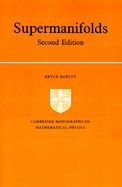5 - Selected applications of supermanifold theory
Published online by Cambridge University Press: 01 June 2011
Summary
Superclassical dynamical systems
Configuration spaces
Classical mechanics is the study of the motion of dynamical systems either acted upon by external forces or interacting with each other. In simple cases the motion is described by a time-varying real vector in a finite-dimensional ordinary vector space. For example, two interacting particles in Euclidean 3-space are described by a real vector (r1, r2) in a 6-dimensional ordinary vector space. Here r1 and r2 are the position vectors of the respective particles relative to some chosen origin. The vector (r1, r2) is said to give the configuration of the two-particle system and the 6-dimensional vector space is called the configuration space of the system. In this example the origin of the vectors r1, and r2 is arbitrary and may, in fact, be chosen independently for each particle. This means that the configuration space may equally well be viewed as simply R6.
The configuration space of a dynamical system need not be of the special form Rn but may be any (ordinary) differentiable manifold. Examples of systems for which the configuration space is more general than Rn are (a) a rigid body (free to move and rotate) and (b) a complex molecule at a temperature low enough so that some of its interatomic bonds are frozen. The motion of each of these systems is described by a time-varying point in a nontrivial differentiable manifold.
- Type
- Chapter
- Information
- Supermanifolds , pp. 227 - 306Publisher: Cambridge University PressPrint publication year: 1992



